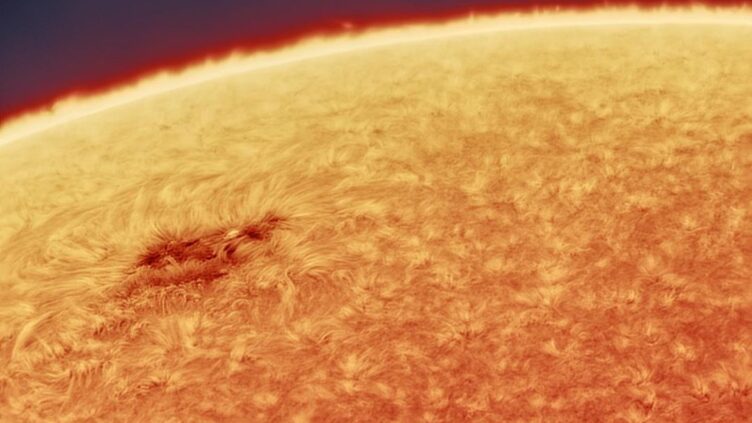Website:
https://sam-web-nextjs.vercel.app/
Coordination:
João Faria (PI)
Pedro T. P. Viana (co-PI)
Scope:
Funding:
Fundação para a Ciência e a Tecnologia (FCT)
Looking for Earths
We all wonder, when looking at the sky, if around one of the seemingly infinite number of stars there exists another planet like our own. And we now know of the existence of exoplanets, thousands of them, orbiting stars other than the Sun. Yet the search continues for a planet like the Earth, with a similar size and mass, a similar internal composition and atmosphere, and just at the right distance from its host star that life could have emerged at its surface. On the road to the discovery of another Earth, one main challenge left to tackle is the intrinsic activity of planet-host stars. To detect exoplanets, we often look at the effects they have on the host stars. For example, the transit method uses the fact that the planets block part of the stellar light when passing between us and the star, and provides us with the planet radius and the orbital period. The radial-velocity (RV) method, on the other hand, measures the gravitational pull imprinted on the star by the orbiting planets. As the star moves back and forth, its light appears red- and blue-shifted due to the Doppler effect. Like this we can measure the planet’s mass, if we know the mass of the star. The transit and RV methods are the most successful and promising detection methods, each totalling hundreds of planet detections. But they are indirect methods and, as such, fall prey to brightness and RV variations which are intrinsic to the star, caused by the magnetic activity in the stellar interior and surface. These activity signals can hide and even mimic low-amplitude planetary signals. For the latest generation of instruments, able to reach a detection precision comparable to the signatures of the smallest and lightest planets (10 cm/s RV signal for the Earth-Sun system), stellar activity is now the bottleneck for the detection of Earth-like exoplanets, whether they orbit stars like the Sun or the smaller M dwarfs.
Tackling the ultimate challenge: stellar activity
Placed in this context, SAM proposes to explore and develop two possible routes to solve the stellar activity conundrum, with a particular application to the RV method. First, we will build a complete model of the stellar surface, simulating the individual active regions and the resulting RV signals they produce. This is a physically-driven approach, where we must plug in the underlying mechanisms behind stellar activity into a numerical model of the stellar surface, and compare it with observed RVs. A second approach will use a flexible family of models called Gaussian processes (GP) to try to differentiate the activity-induced signals from the ones caused by planets. This is a statistical framework, where our physical knowledge about stellar activity is used to inform the GP model and through which we can also learn about the properties of the star. In order to merge the two approaches, we will use kima, a unique methodology developed by the PI for the analysis of RV datasets. This tool implements a computational framework to estimate the parameters of the activity model together with the orbital parameters of the planets and benefits from unmatched advantages that allow an efficient and robust RV analysis. In particular, and unlike any other package, kima considers the number of planets as a free parameter, leading to a large gain in performance and enabling principled model comparison. Once it is augmented with the newly developed activity models, we will be able to accurately fit high-precision RV data to search for low-amplitude planetary signals. To tackle these challenges, our team is supported by a vast experience in the area with an extensive history of publications. We also have a strong link to ESPRESSO, the new flagship spectrograph from ESO. This instrument, which we helped build, is the only currently capable of reaching the necessary RV precision to detect Earth twins. Our involvement in this project translates into privileged access to high-precision RV data which we can use to test our new methods. Overall, SAM will push further down the planet detection limits, even for magnetically active stars. Our results will help ensure the success of current and future RV surveys as well as help drive to fruition the follow-up efforts from future space missions. Ultimately, we will be paving the way towards the detection and accurate characterization of Earth-like planets in the habitable zone.

